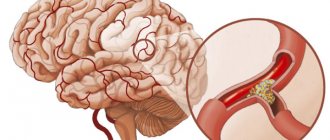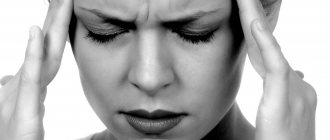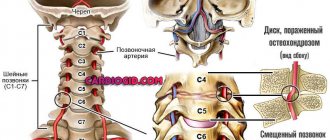Main causes of tremor
This ailment can occur throughout the body and is an involuntary trembling or vibration of a certain part of the body, provoked by synchronous or alternating muscle contractions.
Below are several varieties of this disease.
Physiological tremor is a postural shaking that occurs in the neck, arms, or other area of the body, and is usually not felt by the subject.
Accentuated hand tremor occurs against the background of fatigue, anxiety, thyrotoxicosis, hypothermia, alcohol withdrawal, hypoglycemia, poisoning with arsenic, mercury salts, lead, carbon monoxide. It can also occur with the use of certain medications.
Essential tremor is a kinetic and postural vibration. Bilateral essential tremor of the hands is more common, although asymmetric tremors also occur. This pathology is hereditary. Along with the upper extremities, the lower extremities, head, torso, lips, and vocal cords are often involved. In 25% of cases, tremor may be accompanied by writing disorders (writer's cramp), a slight increase in the tone of the arm muscles, and a mild degree of torticollis.
Parkinsonian tremor is a tremors at rest that decreases with movement and increases with inactivity, walking, and distraction. This symptom is predominantly characteristic of Parkinson's disease, but can also be observed in other diseases, for example, multiple system atrophy. More often the symptom occurs in the hands, less often the lower limbs, lips, chin, and head are involved.
Cerebellar tremor is predominantly an intention tremor, but with some diseases, for example, multiple sclerosis, a slow postural tremor also appears, involving the proximal limbs and trunk, and rarely the head.
Rubral tremor (Holmes tremor) is a combination of kinetic and postural tremor with resting tremor. This type of tremor is more often observed with damage to the midbrain.
Dystonic tremor most often occurs in patients with focal or generalized dystonia. It is a focal, asymmetrical tremor. It often appears against the background of muscle spasms (dystonic posture) and can intensify when the individual resists tonic hyperkinesis, and decreases under the influence of corrective gestures.
Neuropathic hand tremor is a postural-kinetic fluctuation that often accompanies polyneuropathies and chronic demyelinating polyradiculoneuropathy.
Tremor is a pathology that affects a large number of people.
Tremor of the fingers and hands is more common in older people. However, this phenomenon can also be observed in young, completely healthy individuals. In young people, hand tremors are most often observed during excitement or due to physical fatigue.
How to get rid of hand tremors? First of all, it is necessary to find out the causes of hand tremors. There are several reasons that cause trembling of the upper limbs. For example, often increased nervous excitability is a factor causing trembling of the upper limbs. An overly emotional individual who cannot cope with his own anger and irritability, more often than others, feels an unpleasant “shaking” of his hands.
The causes of hand tremors, the treatment of this syndrome, which causes quite noticeable discomfort to people, can be difficult and take a long time. Often, with hands that tremble, it is quite difficult to perform certain actions, for example, manipulating small objects, such as putting a token into a subway turnstile or threading a thread into the eye of a needle.
Trembling of the upper extremities can be provoked by a number of other problems of a psychological nature, namely anxiety before a significant event, emotional stress, fear, and depression.
It is common to observe shaking upper limbs after intense physical exertion, due to hypothermia or heat stroke. This type of trembling is characterized by a passing current. In other words, trembling of the limbs goes away after the cause that provoked the occurrence of the described dysfunction is eliminated.
Hand trembling is often a constant companion of a person. In this case, trembling can be caused by a number of physiological factors: dysfunction of the thyroid gland, low hemoglobin levels, diabetes, liver or kidney pathology, micro-stroke.
Often, “shaky” hand syndrome occurs after an overdose of medications, toxic poisoning with carbon monoxide or drugs, due to a hangover or alcohol intoxication.
There are varieties of the disease in question, the causes of which are not fully understood. These varieties include essential hand tremor. It is believed that in approximately fifty percent of cases it is caused by a gene mutation, that is, it is a hereditary disease. The number of people suffering from the described disease often exceeds fifty percent in one generation.
If trembling of the upper extremities is observed in both parents, then the likelihood of it occurring in the baby increases to seventy-five percent. In addition, there are isolated cases of this form of hand tremor, the etiology of which is unclear. It can occur regardless of the age stage at which the individual is. In this case, most likely, there is a genetic predisposition to this form of the disease.
Essential tremor, also called Minor's disease, is a common hereditary pathology of the nervous system.
Essential hand tremor is a disease, the only symptom of which is trembling, which varies in severity of symptoms, characteristics, location, and prevalence. The most characteristic of this form is considered to be small or medium-amplitude hand tremors. With each purposeful action, the twitching is noticeable and increases slightly as it approaches the target.
In essential hand tremor, shaking at rest is rare. As this form of the disease progresses, patients become unable to work. Some patients find it difficult to even serve themselves - they are unable to fasten buttons, use cutlery, have difficulty drinking liquid from a glass, etc.
If a noticeable tremor is directly related to stress, this indicates its purely psychological nature. This means there are two ways to deal with tremors. One of them gives a temporary effect - this is taking psychotropic drugs, the second gives a lasting effect - this is working with a psychologist or psychotherapist.
- Very often, trembling during excitement is associated with social anxiety (social phobia).
- Sometimes tremors are caused by several reasons at once, for example, both your genetics and a psychological reaction to stress.
- If you doubt the psychological cause of hand tremors or are sure that there is another reason along with the psychological cause, then you should go to a neurologist.
- The doctor will rule out a number of diseases and reactions that cause tremors. Here are some of them:
- Response to physical activity;
- Consequences of taking alcohol and drugs;
- Reaction to drugs;
- Genetic predisposition;
- Parkinson's disease;
- Consequences of traumatic brain injury, stroke or brain tumor;
- Hyperthyroidism;
- Liver or kidney failure;
- Dystonia;
- Polyneuropathy.
However, if tremor manifests itself specifically during communication, then you should consult a psychologist, even if you have determined that the cause of the tremor is a disease, a reaction to stress, or psychoactive substances.
- Contact a psychologist or psychotherapist
Psychotherapy is the most reliable way to cope with tremors caused by anxiety. Psychotherapy may require a certain investment of time and money, but the results are stable.
Psychotherapy does not give immediate results. Therefore, if you need to quickly cope with tremor, you should consult a psychiatrist for medications. When taking medications, hand tremors during anxiety decrease or disappear, but only while taking the medications.
If you are not sure about the purely psychological nature of tremors, then you should make an appointment with a neurologist to rule out other causes of hand tremors during excitement.
- Find appropriate self-help methods
You can read about self-help methods at the end of the article.
There is an opinion among psychologists that trembling is an ancient adaptive mechanism.
For example, two men stand opposite each other, and each wants to become a leader. The fact that their hands are shaking with excitement informs everyone around them that men are extremely excited, they can barely contain themselves and their energy is about to splash out. This is a signal to others to “Move away!”
Each man mentally evaluates his strength and the strength of his opponent. One of them feels that he is stronger.
Because of this, he perceives his trembling as aggression ready to manifest itself, he scares the opponent with his roar, he is preparing to fight.
The other man is not sure of victory, so he perceives his trembling as a manifestation of fear, he will prefer not to get involved in a fight and will move away. Thanks to trembling, it was possible to avoid direct clashes and bloodshed.
Animals also have similar bodily signals; for example, cats’ tails twitch in stressful situations.
Towards graduation, Veronica went to psychotherapy. And she told me about her discoveries about the causes of trembling.
In working with a psychologist, Veronica discovered that trembling was directly related to her restraint. It turned out that without realizing it, she was holding back her indignation, manifestations of fear, her anger and rage, her delight and excitement. The only hint of suppressed emotions was trembling.
Over time, Veronica realized that there was no great need to keep all her reactions to herself. Psychotherapy taught her to be more spontaneous and open. This reduced Veronica's general anxiety, reduced bodily tension and freed up a huge amount of energy in Veronica, which had previously been spent on suppressing natural reactions.
Signs and symptoms
The information below will help you decide when to see a doctor and what will happen during the examination.
The following symptoms are cause for concern:
- Tremor that started suddenly
- Tremor in people under 50 years of age who have no relatives with essential tremor
- Tremor is accompanied by other neurological symptoms, such as changes in mental status, muscle weakness, changes in gait, and difficulty speaking.
- Excitement and rapid heartbeat.
— When to see a doctor?
If alarming signs appear, you should immediately consult a doctor.
If there are no warning signs, you should consult a doctor as soon as possible.
Methods for treating head tremors
In modern society, hand tremors caused by emotional stress are a common phenomenon. Mild sedatives are the first aid for hand tremors. Sedatives can also be used as a preventative measure before an important event that can cause stress, overexertion, or emotional arousal.
Medicine for hand tremors, which has a calming effect, should be taken after consulting your doctor. When a patient comes to the Yusupov Hospital with complaints of hand tremors, a comprehensive diagnosis is carried out, including a consultation with a neurologist, tests and examinations.
An important advantage of visiting the Yusupov Hospital is modern material and technical equipment, which allows you to quickly conduct research and obtain accurate results.
In the treatment of hand tremor, drugs belonging to various groups and having the necessary effect are used. If the attending neurologist has prescribed medication for hand tremors, the tablets should be taken in accordance with the regimen.
Pharmaceutical groups of drugs used for hand tremors:
- Anticonvulsants are used to slow down processes occurring in the nervous system, and they also relieve muscle spasms. The drugs in this group are: Primidon, Hexamidine, Acediprol;
- inhibitors help weaken the transmission of nerve impulses: Neptazan, Pyrazidol;
- tranquilizers normalize the functioning of the nervous system, block panic attacks and relieve anxiety: Frisium, Valium;
- Benzodiazepines have a relaxing effect, prevent seizures and reduce anxiety: Clorazepate, Nitrazepam.
Each medicine for hand tremors used as one of the treatment methods in the neurology clinic is certified in the Russian Federation.
Tremor is a disorder that affects a person's quality of life. Medicine for hand tremors in combination with physiotherapy, changes in habits and rhythm of life, nutrition allows you to improve the condition and cure hand tremors in the shortest possible time. The medical staff of the Yusupov Hospital has sufficient knowledge, skills and equipment to effectively treat tremor.
The specialists and staff at the Yusupov Hospital understand how important it is to create a comfortable psychological environment for the patient in order to successfully treat the disorder. When visiting Yusupov Hospital, patients interact with polite staff, qualified doctors and avoid waiting in lines. Pre-registration for an appointment with neurologists is carried out by calling the Yusupov Hospital.
Endovascular surgeon, Candidate of Medical Sciences. Laureate of the Russian Government Prize in the field of science and technology, laureate of the “Calling” prize. The largest personal experience of EMA in Russia
Why are your hands shaking?
There is an opinion that hand trembling syndrome is the prerogative of only frail old people and experienced alcoholics. Alas, this is just a myth. Tremor, manifesting itself to a greater or lesser extent, currently poisons the lives of many people, regardless of their age, gender, occupation and lifestyle. Moreover, this symptom appears suddenly and can disappear just as suddenly or remain for a long time. The phenomenon, of course, is unpleasant, but the most important thing in this situation is to find its cause, and then select remedies for hand tremors.
Among the causes of trembling limbs, doctors note:
- physical fatigue: due to prolonged hard work, the muscles become overstrained and begin to contract involuntarily;
- emotional overload: stress, strong excitement, irritation, nervous excitement;
- hormonal changes in the body: in this case, hand tremors can be observed in adolescents;
- hypothermia or overheating of the body;
- side effects from taking certain medications;
- abuse of coffee, strong tea, narcotic or toxic substances, as well as strong alcoholic beverages.
These reasons are called physiological. In this case, hand tremors go away as soon as the person rests, calms down, or gets into healthy physical shape. Medical (pathological) reasons are much more serious:
- cervical osteochondrosis;
- neuralgic pathologies, including Parkinson's disease;
- diseases of the thyroid gland, kidneys, liver;
- pathologies of the spinal cord or brain;
- problems in the functioning of the musculoskeletal system.
With these and other similar medical diagnoses, it can be difficult to cope with hand tremor, but the doctor will still be able to select a medicine for hand tremor, which will be part of complex therapy.
Prices for services *
Trembling and shaking of hands are common signs of various ailments, such as Parkinson's disease, hepatolenticular degeneration, torsion dystonia, multiple sclerosis, liver cirrhosis, thyrotoxicosis, intoxication with drugs, metals, drugs, etc.
How to treat hand tremor, how to get rid of hand tremor if the tremors are caused by one of the above ailments? First of all, drug therapy is aimed at getting rid of the pathology that caused this disorder.
Medicines for hand tremors include anticonvulsants, such as Primidone, non-selective beta blockers (Anaprilin), carbonic anhydrase inhibitors (Diacarb). A particularly effective medicine for hand tremors is Nadolol (a beta blocker).
In addition, these diseases must be differentiated from alcoholic and essential hand tremor, since their treatment must be carried out using other methods.
Essential tremor is considered a familial tremor because it is a pathology of the nervous system that is inherited. The only symptom of this disease is trembling, which most often affects the hands, but can also affect the lower limbs, head, torso, and diaphragm.
How to treat essential hand tremors? In most cases, treatment for this form of the disease is limited to drug therapy. The beta blocker Propranolol has a good therapeutic effect. It can significantly reduce tremors, but due to a number of contraindications, it is prohibited from being prescribed to certain groups of patients.
In this case, patients may be recommended the anticonvulsant drug Clonazepam. In recent years, intramuscular injection of Botox, which affects nerve endings, has been successfully used to treat this form of tremor. In order to obtain a metabolic effect, vitamin B6 is prescribed.
In cases where conservative treatment is ineffective, surgical intervention is recommended. Implantation of a neurostimulator is indicated to stimulate deep structures. In addition, stereotactic surgery is often performed on the ventrolateral nucleus of the thalamus.
Due to chronic excessive consumption of alcoholic beverages and acute alcohol intoxication, alcoholic hand tremors can occur. Trembling and shaking of hands is an integral part of a hangover and withdrawal syndrome, which is observed in individuals with alcoholism due to the cessation of intake of alcohol-containing liquids.
Trembling is considered one of the unpleasant consequences of excessive alcohol consumption. To get rid of it forever, it is necessary to carry out comprehensive treatment for alcoholism. Self-prescription of drugs that can reduce hand shaking is not recommended, since drugs aimed at relieving tremors have a strong effect on the entire cardiovascular system. Therefore, before taking any medications, it is recommended to consult a specialist.
Treatment of tremors caused by drinking alcoholic beverages begins with eliminating the symptoms of general intoxication in the patient’s body. For this purpose, intravenous drip administration of the following drugs is prescribed: isotonic solution (saline), hepatoprotectors, glucose, vitamins, antihistamines, sedatives and sleeping pills. Medicines are prescribed that restore salt balance, metabolic processes, and acid-base balance.
After the symptoms of intoxication have been relieved, the patient is prescribed medications aimed at normalizing blood pressure, sedatives and anticonvulsants, and antidepressants. In addition, complex therapy should include the use of enzymes that help normalize the functioning of the digestive system.
Thus, hand tremors caused by alcohol intoxication should be treated together with other manifestations of alcoholism. The dosage of prescribed medications is calculated individually for each subject.
Alcoholic hand tremors can be treated at home using folk remedies. However, there are a number of reasons why self-medication is not recommended. Alcohol shaking is one of the main signs of serious dysfunction of the nervous system. Therefore, immediate treatment is indicated.
If the patient ignores the existing problem for a long time, this can provoke sad consequences, such as myocardial infarction, stroke, paralysis, etc. When there is uncontrollable trembling of the entire torso and limbs, the help of a specialist is needed. For minor manifestations of tremors, you can use traditional medicine.
For example, sage infusion helps get rid of trembling in the upper extremities. To prepare it, you need to pour ten grams of herb leaves into a glass of hot water and let it brew for nine hours. It is recommended to consume this infusion in an amount of 5 milliliters (one teaspoon) after meals. You can wash it down with tea, compote, jelly.
The following herbal infusion will also help relieve the symptoms of hand tremors and calm you down. To prepare it you will need ten grams of medicinal valerian, thirty grams each of dried herb, motherwort and heather. All of the listed ingredients should be mixed thoroughly, pour a liter of hot boiled liquid and leave in a thermos for approximately 8-10 hours. It is recommended to use 50 ml. per day.
Alcohol tremors can also be treated with relaxation therapy. In this case, baths with aromatic oils, sage or chamomile will be effective ways to relax and calm the nervous system. This procedure can only be carried out if the person is sober. In a state of hangover or with withdrawal symptoms, this procedure is strictly prohibited.
Hand tremors treatment at home. When faced with such a phenomenon as hand tremor for the first time, a person begins to worry and get nervous. This behavior can only intensify the shaking. You need to understand that trembling does not always indicate the presence of a serious illness; it can often be a consequence of hypothermia, overwork, overheating, or emotional stress.
In addition, it is recommended to temporarily stop drinking drinks containing caffeine, reduce the amount of chocolate you consume and increase the amount of fluid you drink, and completely avoid drinking alcoholic beverages and smoking.
Tremor degrees
1) Slightly expressed, or appearing at certain periods of time, which are significantly shorter than the normal state. Tremor does not affect the patient’s lifestyle or quality of life in any way;
2) Moderate tremor. The patient is sometimes forced to change jobs, since he cannot control subtle and small movements. Some social functions suffer: for example, in a restaurant or at a party a person may break a crystal glass, etc.;
3) Significantly pronounced tremor. With it, the patient cannot serve himself: with a glass of water he can break his face and teeth, he is forbidden to use a fork, as he can gouge out his eye, such a person cannot hold a book, he is forced to put it on the table, but at the same time turning the pages will be difficult.
Writing and typing text on a computer is also extremely difficult. Such persistent hand tremors occur with multiple sclerosis with damage to the cerebellum, as well as with hepatocerebral dystrophy and encephalitis.
Hand tremors in a child
In some cases, pathological or physiological hand tremors may also be observed in a child older than one year. Physiological trembling is most often observed when the baby is excited, has strong emotions, nervousness or fear. Episodes of physiological tremors, as a rule, are always associated with the baby’s nervous overstrain and are short-term in nature. The pathological form of trembling is accompanied by various pathologies of the nervous system.
Episodes of hand tremors in children can be observed when trying to carry out habitual movements that are not associated with nervous tension, and at rest. In addition to muscle twitching, manifestations of other pathologies of the functioning of the nervous system may be observed: sleep disturbances, headaches, excessive irritability.
Immaturity of the nervous system is the cause of physiological tremor in childhood. Often, after its complete formation, episodes of “shaking” disappear without negative consequences. Pathological tremors in children can be caused by various dysfunctions of the body systems, for example, during pregnancy, severe fetal hypoxia, infectious diseases suffered by the mother, pregnancy pathologies, sepsis, thyroid dysfunction, kidney and liver pathologies, birth injuries, genetic predisposition, degenerative pathologies of the nervous system. systems.
Previously, we looked at the types of hand tremor in adult patients and this assumed that they have a fully mature and functional nervous system. If you are considering hand tremor in a child, you need to keep in mind that this symptom may be temporary.
As a rule, this type of disorder occurs against the background of emotional stress and the release of norepinephrine into the blood. This is usually a signal for active muscle contraction and increased utilization of oxygen and glucose by the muscles, but the muscles react with trembling.
It is important for the pediatrician to know that the baby overcame the critical periods of intrauterine development without “adventures”, and during pregnancy there were no diseases, intrauterine fetal hypoxia, or phenomena of fetoplacental insufficiency.
Other causes of tremor may include intrapartum (perinatal) birth trauma, threatened miscarriage, prematurity, rapid labor, congenital diabetes mellitus (diabetic fetopathy), or congenital syphilis.
Hand tremors - causes and treatment + medications and recommendations
In the practice of a therapist of almost any specialization (pulmonologist, cardiologist, gastroenterologist) there are patients who either complain of trembling in their hands, or it is detected during an examination. And then the doctor needs to figure out whether this trembling is a symptom of the disease with which the patient came in, or whether it is a concomitant symptom and is not associated with the underlying pathology.
Perhaps, neurologists find themselves in a more advantageous position, since tremor, or trembling, is studied in detail in the course of neurological diseases. Consider such a common symptom as trembling hands.
Hand tremors - what is it?
Hand tremor is a state of trembling of the hands, which can be either short-term or permanent, symmetrical and one-sided, pronounced and erased, with a high amplitude and frequency of trembling and with a low one, dependent on volitional effort and not subject to it.
As you can see, hand tremors have many characteristics that the doctor needs to understand together with the patient, since it is the methods of questioning and examination that are of primary importance in the diagnosis of tremor of all types.
There is nothing easier than checking your own body for tremors. To do this, you need to stretch your arms forward, spread your fingers and hold them in this position for at least a minute. Most often, if trembling is noticeable from the first seconds, it will gradually intensify as fatigue in the hands increases.
Sometimes trembling in the hands can be observed in a completely healthy person, but only for a short time, and only when exposed to strong emotional stimuli (excitement, strong fear).
There are many causes of tremor and treatment directly depends on them. Obviously, alcohol tremors or hand tremors in a child are completely different things.
Polyneuropathy, what it is, its causes and how it is treated: //medknsltant.com/polinejropatiya/
Causes of hand tremors
The causes of hand tremors can be divided into two large groups. The first group includes physiological tremor, which is a functional disorder, may be temporary and does not indicate any disease.
Its reasons are:
- Increased emotionality. Asthenic, neurotic individuals and artists may experience hand tremors during excitement;
- Depression, post-traumatic stress disorder, traces of emotional stress;
- Character accents. Thus, with hysterical psychopathy, a person may experience tremor of the head and hands at certain intervals;
- Drug reaction. Some drugs increase the convulsive readiness of the nervous system: some antidepressants, adaptogens (Rhodiola rosea, golden root, extracts of ginseng, Schisandra, Eleutherococcus), lithium preparations, aminophylline, some antipsychotics;
- Trembling in the hands can be caused by drinking strong coffee, tea, or strong cigarettes;
- The use of drugs such as amphetamines causes tremors in the hands;
- A pronounced example of tremor in a healthy person can be chills during hypothermia, after heavy physical work (for example, working as a loader);
It is important that all these types of physiological tremors have an external factor, upon the exclusion of which the condition should disappear. You should consult a doctor if the tremor does not disappear 15 days after normalizing your lifestyle.
Pathological tremor can, as a rule, indicate either poisoning (chronic), or a nervous disease, or other causes, for example, endocrine. Frequent causes of pathological trembling in the hands, which is a symptom of the disease, are:
- Poisoning, for example, lead, carbon monoxide, strychnine;
- Chronic alcoholism and withdrawal syndrome are a separate line;
- Severe tremors in the hands are caused by hypoglycemia, which occurs with type 1 diabetes mellitus (insulin-dependent);
- Thyrotoxicosis and pathology of the adrenal glands also provoke prolonged tremor;
- Chronic liver failure, with severe jaundice in fulminant forms of viral hepatitis. In this case, a “popping” tremor occurs - the hands tremble even if the person is lying in bed;
- Damage to individual brain structures: brain stem, cerebellum, extrapyramidal nuclei causes persistent tremor, as in other extrapyramidal disorders. Trembling of the hands when the cerebellum is damaged is called intentional: the swing of the hands increases when trying to reach any object;
- Familial forms caused by hereditary predisposition;
- Parkinson's disease;
- Senile dementia, Alzheimer's disease;
- Hepatocerebral dystrophy, or Wilson-Konovalov disease;
- Multiple sclerosis and other demyelinating diseases (acute disseminated encephalomyelitis);
- Progressive forms of tick-borne encephalitis, encephalitis and chronic encephalomyelitis;
- Anemia, including hereditary, conditions associated with chronic blood hypoxemia: helminthic infestations, habitual blood loss due to hemorrhoids, ulcerative colitis and chronic gastric ulcers;
A separate nosological form is essential tremor, which can be familial in nature, but there are no disorders of other systems. Hence the name - “essential”, which can be replaced with something else: “trembling for unknown reasons”.
Based on the description of some of the reasons, it becomes clear that the problem of tremor is very complex, and doctors cannot approach its explanation “carelessly.”
There is an unhealthy practice, without understanding it, to immediately diagnose a patient, especially after 60 years, with “Parkinson’s disease”, and send such a person to the center of extrapyramidal pathology.
As a result, it turns out that the person does not have Parkinson’s disease, but he turns out to be unnecessary to any of the doctors. Therefore, the problem of timely diagnosis of symptomatic tremors is acute for clinicians.
Causes of Parkinson's disease and the role of hereditary factors: //medknsltant.com/bolezn-parkinsona-simptomy-i-priznaki-lechenie/
Tremor degrees
All manifestations of trembling in the hands must be classified according to the degree of severity, since sometimes this serves as a reason for transferring the patient to disability, due to persistent disability. Tremor is divided into:
1) Slightly expressed, or appearing at certain periods of time, which are significantly shorter than the normal state. Tremor does not affect the patient’s lifestyle or quality of life in any way;
2) Moderate tremor. The patient is sometimes forced to change jobs, since he cannot control subtle and small movements. Some social functions suffer: for example, in a restaurant or at a party a person may break a crystal glass, etc.;
3) Significantly pronounced tremor. With it, the patient cannot serve himself: with a glass of water he can break his face and teeth, he is forbidden to use a fork, as he can gouge out his eye, such a person cannot hold a book, he is forced to put it on the table, but at the same time turning the pages will be difficult.
Writing and typing text on a computer is also extremely difficult. Such persistent hand tremors occur with multiple sclerosis with damage to the cerebellum, as well as with hepatocerebral dystrophy and encephalitis.
Tremor in a child
Previously, we looked at the types of hand tremor in adult patients and this assumed that they have a fully mature and functional nervous system. If you are considering hand tremor in a child, you need to keep in mind that this symptom may be temporary.
It may simply arise due to the unpreparedness and underdevelopment of the nervous system to receive and transmit impulses due to incomplete maturation of the peripheral nerves.
As a rule, this type of disorder occurs against the background of emotional stress and the release of norepinephrine into the blood. This is usually a signal for active muscle contraction and increased utilization of oxygen and glucose by the muscles, but the muscles react with trembling.
It is important for the pediatrician to know that the baby overcame the critical periods of intrauterine development without “adventures”, and during pregnancy there were no diseases, intrauterine fetal hypoxia, or phenomena of fetoplacental insufficiency.
Other causes of tremor may include intrapartum (perinatal) birth trauma, threatened miscarriage, prematurity, rapid labor, congenital diabetes mellitus (diabetic fetopathy), or congenital syphilis.
Under normal conditions , with the correct development of the child, most often after reaching the age of one year, hand tremors in babies disappear. Otherwise, observation by a pediatric neurologist and subsequent treatment are required.
Alcohol tremors
Tremor of the fingers of drunkards became part of folk proverbs and sayings, and became the subject of theatrical miniatures. In fact, the toxic effect of ethanol on the nervous system is to blame, which results in the development of toxic polyneuropathy.
As a rule, the tremors are worse in the morning. In the initial periods of alcoholism, tremor is expressed inconsistently, but over time it becomes constant.
- It can be treated only with the condition of complete abstinence from alcohol, otherwise all detoxification methods will be ineffective.
Essential hand tremor
A few words have already been said above about essential tremor. To complete the picture a little, it should be said that this disease is common in 2% of the young population, under the age of 40, and much more often in old age.
Hand tremors occur with a frequency of 8-10 times per second, sometimes tremors of the head, legs, and voice join the movements.
Essential tremor should not be confused with Parkinson's disease: Parkinson's sufferers experience “freezing of posture,” muscle rigidity, propulsion, and “jagged” hypertonicity. In addition, with essential tremor, unlike Parkinson's disease, there is no progression, and patients retain memory, intelligence and the ability to self-care for a long time.
This disease is inherited in an autosomal dominant manner, from parents to offspring.
Alcohol tremors
Tremor of the fingers of drunkards became part of folk proverbs and sayings, and became the subject of theatrical miniatures. In fact, the toxic effect of ethanol on the nervous system is to blame, which results in the development of toxic polyneuropathy.
As a rule, the tremors are worse in the morning. In the initial periods of alcoholism, tremor is expressed inconsistently, but over time it becomes constant.
- It can be treated only with the condition of complete abstinence from alcohol, otherwise all detoxification methods will be ineffective.
Essential hand tremor
A few words have already been said above about essential tremor. To complete the picture a little, it should be said that this disease is common in 2% of the young population, under the age of 40, and much more often in old age.
Essential tremor should not be confused with Parkinson's disease: Parkinson's sufferers experience “freezing of posture,” muscle rigidity, propulsion, and “jagged” hypertonicity. In addition, with essential tremor, unlike Parkinson's disease, there is no progression, and patients retain memory, intelligence and the ability to self-care for a long time.
This disease is inherited in an autosomal dominant manner, from parents to offspring.
Directions for use and dosage
The dosage regimen is selected individually.
The drug should be taken orally, regardless of the time of meal.
In the instructions for Anaprilin, the recommended dosage for the treatment of arterial hypertension is 40 mg twice a day. It is allowed to increase the dose in the absence of a pronounced effect to 40 mg three times a day or 80 mg twice a day. It is not recommended to exceed the maximum recommended dosage per day: 320 mg (in exceptional cases it is 640 mg).
Treatment of angina and heart rhythm disturbances is carried out by using Anaprilin in an amount of 20 mg three times a day. The dose is gradually increased to 80-120 mg, which should be divided into 2-3 doses. The maximum daily dose of Anaprilin in this case is 240 mg.
Read also: Symptoms of alcoholism in men and its consequences
When preventing migraine and treating essential tremor, it is recommended to take Anaprilin in an amount of 40 mg two or three times a day (initial dose), then the dosage is increased to 160 mg per day.
When administering the drug intravenously, the recommended initial dose is 20 mg, a single dose is from 40 to 80 mg, the frequency per day is no more than 3 times.











